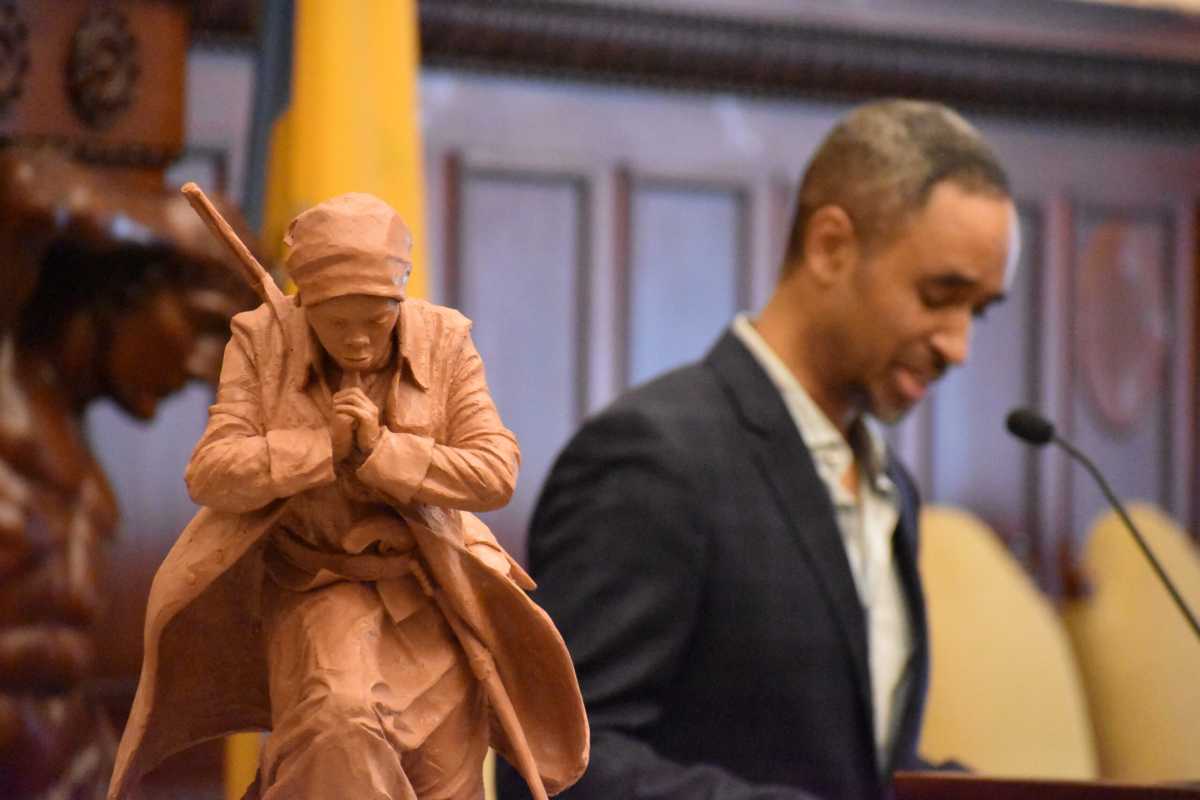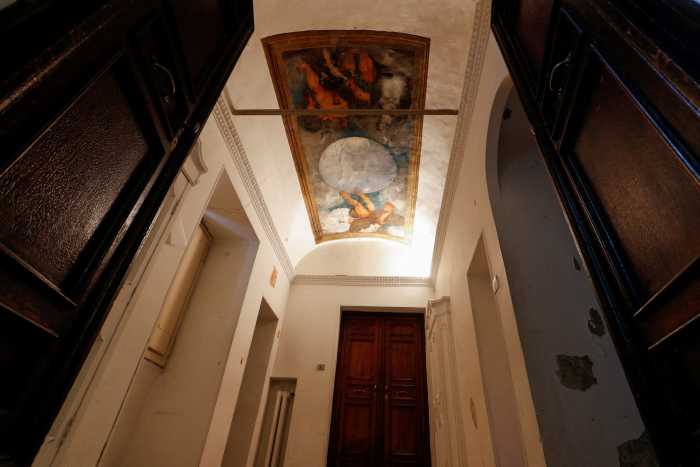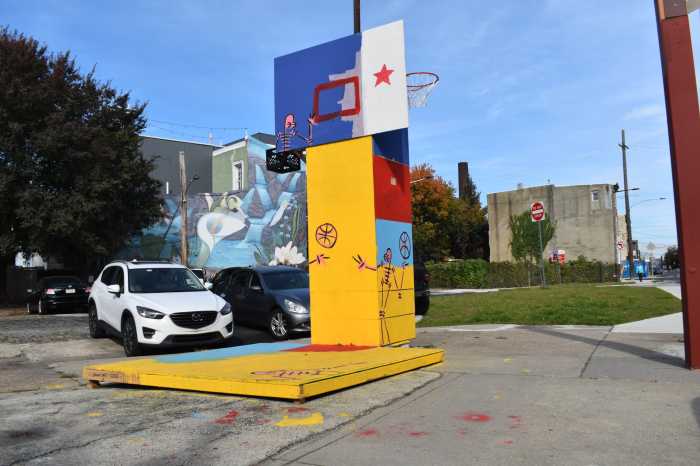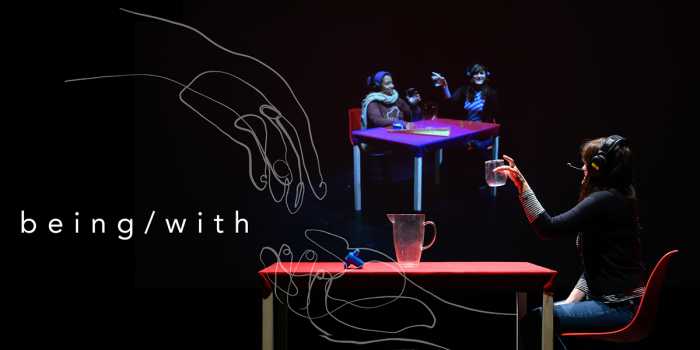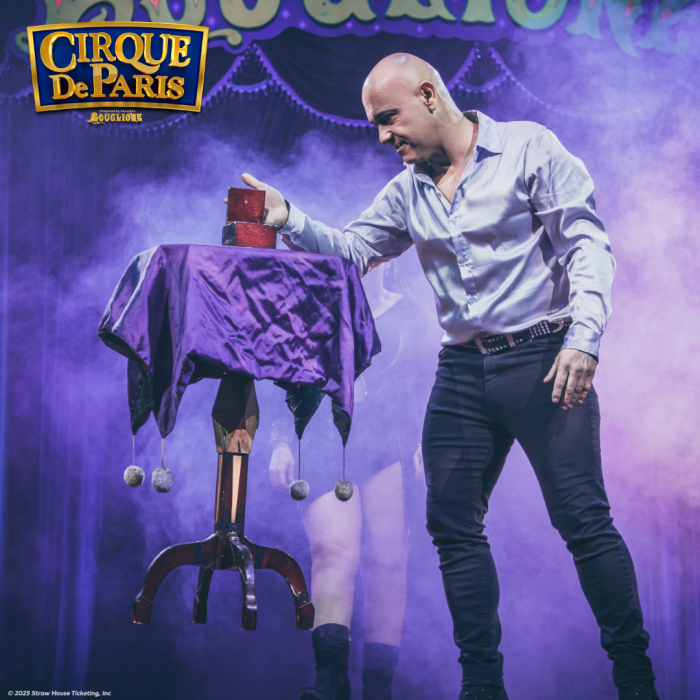A sculpture of abolitionist Harriet Tubman, standing atop broken shackles and other debris with her head bowed and her hands together, will be constructed outside City Hall.
Mayor Jim Kenney’s administration on Monday unveiled the winning design for the project to honor Tubman with a statue, following a lengthy process that generated pushback when the city attempted to award a no-bid contract to a white sculptor.
In the end, an advisory committee, composed of historians, art experts, high school students, Tubman descendants and others, selected Alvin Pettit’s proposal, with the help of public input.
“I cannot express enough the significance of this project,” Pettit, of Jersey City, said at a news conference Monday. “It goes far beyond just creating a statue. We’re telling a story, a story that I’ve often felt was incomplete.”
Pettit said he wanted to portray Tubman as a “conqueror,” not fleeing with runaway slaves along the Underground Railroad, as she is typically depicted. He was inspired by her effort during the Civil War to lead 150 Black Union soldiers into battle as part of the Raid on Combahee Ferry. Tubman, in the design for the sculpture, is trampling on a Confederate flag.
“A former enslaved woman who spent most of her life escaping tyrants was now on the offense and finally had tyranny on the run from her,” Pettit added.
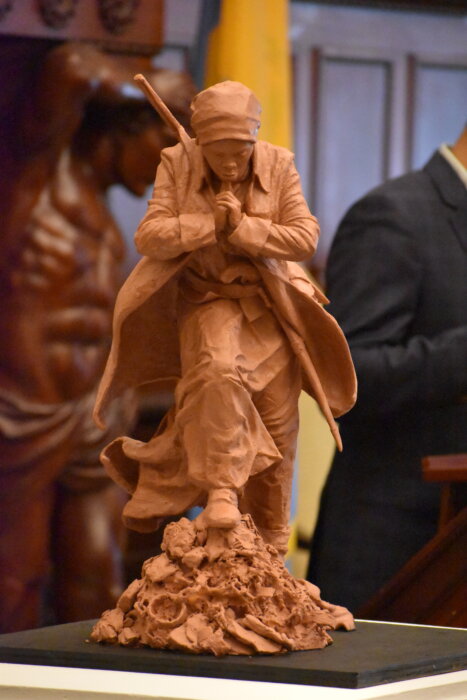
Another inspiration was “The Prayer at Valley Forge,” a famous image showing George Washington, a slave holder himself, praying in a forest. Pettit said he wanted to reimagine the pose with Tubman, who was born into slavery.
“All the artists did an awesome job, but this one seemed to have stood out,” said Danetta Green Johnson, a Tubman family member who served on the committee. “Alvin constructed this piece of artwork with so many details and genres of her life.”
Kenney administration officials anticipate the monument being completed in early 2025. The statue will be installed at the northeast corner of City Hall, near the main public entrance, and it will be the first piece of city-owned public art depicting a Black female historical figure.
“Part of my mission and goal when I was on City Council and as mayor especially was to tell the true story about Philadelphia and about the United States,” Kenney said.
“There were so many people who are so important in our city’s development and our country’s development,” he continued. “And those history pages were ripped intentionally out of the history books.”

Kenney noted an ongoing project to build a statue of singer Marian Anderson outside the Academy of Music and mentioned that his administration is considering ways to memorialize Julian Abele, a Black architect who helped design the Philadelphia Museum of Art.
Kelly Lee, the administration’s chief cultural officer and head of its arts office, fought back tears Monday as she recalled Kenney’s reaction when a traveling statue stationed outside City Hall for three months early last year began attracting crowds.
“His first words were, ‘How do we get our own permanent Harriet Tubman statue?’” Lee said.
Initially, in March 2022, they commissioned the artist behind the temporary installation, Wesley Wofford, of North Carolina, to create a permanent monument. But advocates, including the Celebrating the Legacy of Nana Harriet Tubman Committee, called for an open application process and the inclusion of local and Black artists.
Last summer, the Kenney administration reversed its decision, and a window for artists to submit proposals opened nearly a year ago.
“I loved the traveling statue. I loved it,” Kenney said Monday. “And I was angry when this controversy started about an open call. In the end, we will love this statue. It will be ours.”
Fifty artists applied, and the advisory committee chose five, including Pettit, to move forward as semifinalists. One, Robert Blake, withdrew his submission after being commissioned for a public artwork in Massachusetts, city officials said.
The next step for Pettit is to finalize his design and present it for approval to the Art Commission in the coming months, according to a timeline posted on the website for the city’s Office of Arts, Culture and the Creative Economy.




